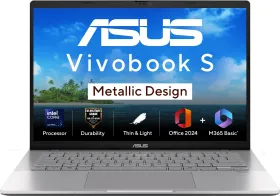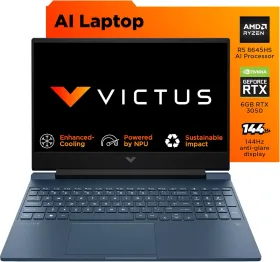Automatic speech recognition (ASR) has quietly evolved from a novelty, asking Alexa for the weather, to a backbone technology powering healthcare dictations, multilingual customer support, live captions, and even social media voice notes.
But the battle for dominance is no longer just about who can hit the lowest word error rate (WER). The real war is about trust, speed, and accessibility. Can it work offline? Will it respect your privacy? Can it understand your dialect?
Here’s where the voice tech arms race stands in 2025, who’s leading, who’s lagging, and where the cracks are showing.
Google Cloud Speech-to-Text

Google’s ASR is everywhere, often without you even realising it. With 120+ languages and deep hooks into the Google Cloud stack, it’s an easy choice for organisations already living in the Google ecosystem.
Pros: Mature infrastructure, solid multilingual support, fast integration.
Cons: Cloud-only, meaning constant internet dependence, variable accuracy in noisy environments, and lingering privacy worries for sensitive industries.
Shunya Labs Pingala V1

Pingala V1 is the quiet but formidable challenger. With a WER of 2.94%, it’s over 50% more accurate than many incumbents. Its trump card? It runs fully offline, with no cloud dependency. That makes it instantly compliant with SOC 2 and HIPAA — catnip for hospitals, banks, and government agencies.
Pros: Industry-leading accuracy, 200+ languages (including underrepresented Indic, African, and Asian dialects), rock-solid privacy.
Cons: Offline power means heavier local hardware requirements; not yet as deeply integrated into popular developer ecosystems.
Microsoft Azure Speech-to-Text

Azure’s ASR is the steady workhorse of the enterprise crowd. If you’re already in Azure, it just makes sense. It supports 75+ languages and offers stable, predictable performance.
Pros: Reliable APIs, strong enterprise security posture, predictable scaling.
Cons: Cloud-only again; weaker in niche or low-resource languages, and not the most accurate in challenging audio conditions.
Amazon Transcribe

If your infrastructure lives on AWS, Transcribe drops in seamlessly. It’s available in real-time and batch modes and integrates cleanly with other AWS services.
Pros: AWS-native scaling, flexible transcription modes.
Cons: Limited language coverage, less competitive in accuracy, and unsuitable for regulated industries that can’t send audio to the cloud.
IBM Watson Speech-to-Text

Watson has always positioned itself as the “build-your-own” option for businesses that need customised vocabularies or niche domain models. Security is a central pillar.
Pros: Deep customisation, security-first approach, solid for major languages.
Cons: Narrower language support, setup complexity, and mixed results with diverse accents.
OpenAI Whisper

Unlike the big-budget cloud players, Whisper is a fully open-source ASR model. It’s beloved in the developer community for its robustness across dozens of languages and its surprising ability to handle accents that trip up commercial systems. It can run locally, in the cloud, or embedded in other AI services, including ChatGPT itself.
Pros: Free to use, flexible deployment, excellent at accent/dialect handling.
Cons: Resource-hungry for real-time use, no enterprise-grade service layer unless you build it yourself.
Where ChatGPT and Grok Fit In? Why They’re Not Contenders

Both ChatGPT (OpenAI) and Grok (xAI) now offer voice interaction, powered in part by ASR capabilities. ChatGPT leans on Whisper internally, while Grok uses a mix of in-house and open-source models.
But here’s the catch:
- These ASR features are not standalone products. They’re optimised for chat-first experiences, not for bulk transcription, enterprise integration, or regulated industries.
- Accuracy is good for conversational use but lacks the domain-specific tuning that enterprises require.
- Privacy controls are limited because most processing still happens in the cloud.
- No formal APIs or service guarantees exist for developers wanting to use just the ASR layer.
In other words, while ChatGPT and Grok use ASR to make their voice modes work, they’re not competing with Shunya Labs, Google, or Microsoft in the commercial ASR service space, at least not yet.
Key Limitations of Today’s ASR Engines
Even the best players in this arms race face challenges that keep them from perfection:
- Accents & Dialects: Accuracy drops sharply for underrepresented accents without dedicated training data.
- Noisy Environments: Background chatter, wind, or overlapping speech still trip up most systems.
- Privacy Trade-offs: Cloud-first models risk sensitive data exposure.
- Latency: Real-time transcription at scale can lag, especially for resource-heavy local models.
- Cost: Enterprise licensing and high compute requirements can make large-scale deployment expensive.
The Real Winners Won’t Be the Loudest Players
The headline competition Google vs. Microsoft vs. Amazon hides a more interesting reality. The most transformative ASR breakthroughs are coming from privacy-first upstarts like Shunya Labs and open-source projects like Whisper, not just the corporate giants.
In the end, the winner of the voice tech arms race won’t be the one with the shiniest press release; it’ll be the engine that works equally well offline in a rural clinic, online in a call centre, and embedded inside your personal AI assistant. And right now, only a handful of players are close.

































